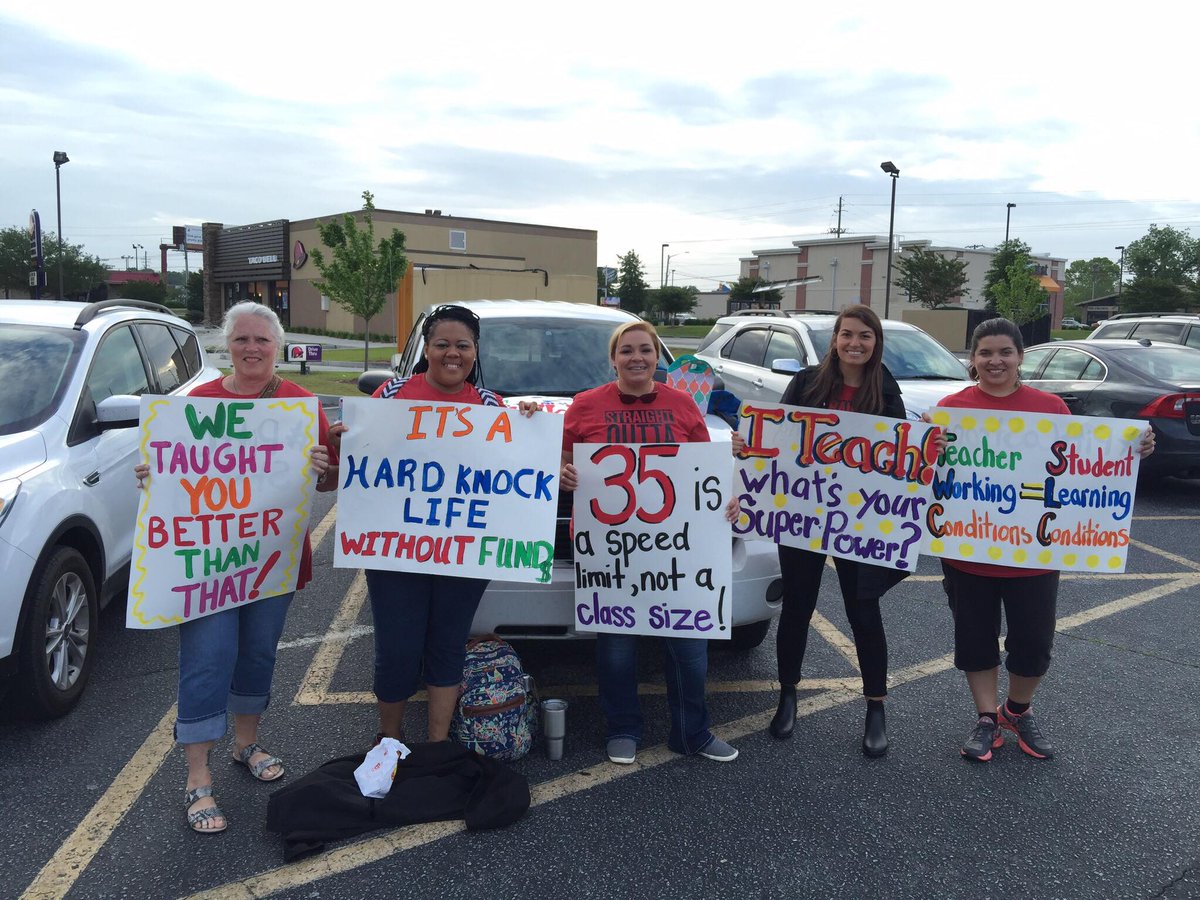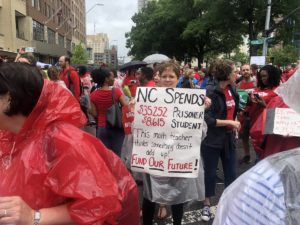Published: May 16, 2018
 There are more than 1.5 million reasons behind Wednesday’s “March for Students and Rally for Respect” in North Carolina, where more than 20,000 educators from 40 or more school districts traveled to Raleigh to demand the attention of state lawmakers. Those reasons include the 1.5 million public school students who often are learning in crowded classrooms with outdated textbooks and technology.
There are more than 1.5 million reasons behind Wednesday’s “March for Students and Rally for Respect” in North Carolina, where more than 20,000 educators from 40 or more school districts traveled to Raleigh to demand the attention of state lawmakers. Those reasons include the 1.5 million public school students who often are learning in crowded classrooms with outdated textbooks and technology.
Here are a few more reasons:
- State education funding! Last year, the Center on Budget and Policy Priorities (CBPP) reported that state funding for North Carolina students had dropped 12 percent since 2008. That means bigger class sizes, cuts to academic programs, and outdated classroom resources. “We have to make sure our schools in North Carolina are fully funded,” says Ronda Mays, president of North Carolina’s Forsyth County Education Association. “The per-pupil spending has to be at least—at least—to the national average.
 Educators want to send a message to lawmakers: Choose students over corporations. Since 2013, the GOP-controlled North Carolina state legislature has cut the corporate tax rate from 6.9 percent to 3 percent. The revenues lost to these tax cuts—about a half a billion dollars a year—make it impossible to adequately fund public education. And it’s only going to get worse! Corporate and person taxes are scheduled to drop again next year. The North Carolina Association of Educators (NCAE) wants the legislature to cancel these cuts until school funding is improved.
Educators want to send a message to lawmakers: Choose students over corporations. Since 2013, the GOP-controlled North Carolina state legislature has cut the corporate tax rate from 6.9 percent to 3 percent. The revenues lost to these tax cuts—about a half a billion dollars a year—make it impossible to adequately fund public education. And it’s only going to get worse! Corporate and person taxes are scheduled to drop again next year. The North Carolina Association of Educators (NCAE) wants the legislature to cancel these cuts until school funding is improved.- They’re sick of seeing their colleagues forced out of the classroom because they can’t afford to stay. Nearly one in 10 North Carolina teachers left the profession last year, and the rates are even higher for new teachers. Months into the school year, some school districts had teacher vacancy rates of more than 10 percent. At least part of the reason is pay: Since 2009, N.C. teacher pay has declined 9.4 percent, when you adjust for inflation. The average salary is $9,600 below the national average. “And they’re still paying out of their pocket to make sure students have what they need,” Mays notes.
- School support personnel are suffering, which means students are suffering. Nearly 7,500 teachers’ aides in North Carolina have lost their jobs because of budget cuts. Caseloads for counselors have increased. “There are people in our schools who are not classroom teachers, but who are just as vital to students,” says Mays, a school social worker. “It’s important that we have these people to work with students, and it’s important that they be fairly compensated, too.”
- They just can’t take it anymore. North Carolina’s #RedforEd movement isn’t an overnight sensation. Educators have been watching the situation in their schools get worse for more than a decade. The movement, says NCAE President Mark Jewell, is “the culmination of years of starving our public school system.”
Learn More
Get more from

We're here to help you succeed in your career, advocate for public school students, and stay up to date on the latest education news. Sign up to stay informed.





